Main page <> Index of descriptions <> Previous description <> Bacteria <> Next description
Bacteria
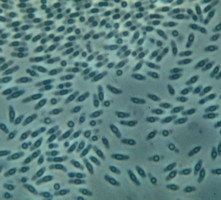
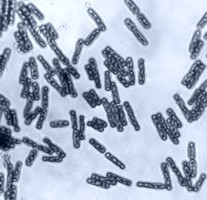
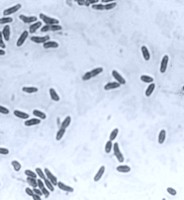
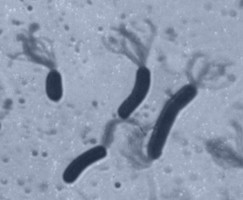
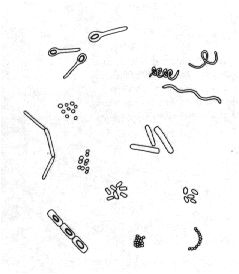
Bacteria are not fungi and are included here only because they will always be found where fungi occur. They form wet or slimy colonies, often with rather bright colours and unpleasant odours. The cells are nearly always very small and take a variety of shapes including the well-known rods (bacilli), spheres (cocci) and helices (spirilla). Some species, such as those of Streptomyces and related genera can form multicellular filaments. Many bacteria are motile, swimming freely around a microscope slide or wet Petri plate. The photographs above illustrate several features of bacteria. At left is a colony of a species of Bacillus, photographed in a sample of pond water. Each of the rod-shaped cells contains a thick-walled endospore. At middle-left is a group of rods of Bacillus aureus, a species that can be isolated from certain foods such as fried rice and which can cause diarrhea in humans. Escherichia coli, at middle right, is a normal inhabitant of the human intestinal tract that occurs in both benign and beneficial forms. Because E. coli is always in the intestinal tract, its presence in water and other materials is a good indicator of fecal contamination. The organism at far right is a species of Spirillum, common in nutrient-rich ponds. Note the curved shape that will become a loose helix in larger cells and the fasicle of flagella at the end of each cell. Flagella, which may occur singly or in clusters, are the main means of bacterial locomotion. Bacteria must be handled with great care as some are pathogenic to humans.
The routine identification of bacteria requires specialized facilities not normally available to mycologists. Although morphology can play a role in identification it is also necessary to utilize a battery of nutritional and physiological tests as well. Taxonomic studies based on nucleic acid homologies have shown that the traditional methods for classifying bacteria are often at odds with genetic evidence. Present-day bacteriologists still rely on traditional methods, but these are quickly being replaced by more reliable methods using genetic sequences. The basic reference for traditional methods is the 9th edition of Bergey's Manual of Determinative Bacteriology (Holt, 1994).